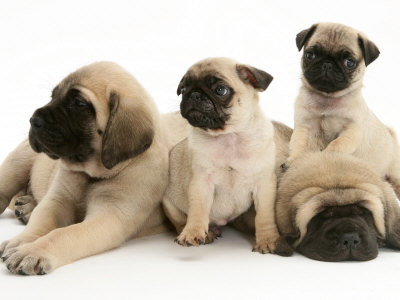As a little bundle of fur, there's not a lot of harm that your puppy can do to you when he jumps up on you in excitement as soon as you walk in the door. Reward him when he stops jumping on you by offering him a treat or praising him. To nip this habit in the bud, ignore your pup as soon as he begins the jumping action. Of course, the "sit-stay" method will work only if these commands have been firmly established in your pup. Try going out the back door and entering the house again, and practice curbing his jumping tendencies.
Even if your dog is a small sized breed that will probably not be able to injure you the way, say a Labrador or German Shepherd jumping on you could, he could still injure a child. You're preparing your pup to grow into a healthy and well adjusted dog that's completely accepted in society.This will take practice.
Not to mention that he can dirty your clothes and mess up your hair, when you're all ready to go out.
Use the "sit" and "stay" commands to get him to stop the jumping action. It can be hard to do, but think of it this way. He can't jump if he is sitting. In short, you're doing it for his own good. A year from now, however it could be a different story altogether. Eventually, he will understand that being on all fours equals "reward" while standing on his hind legs equals "punishment. Shouting also doesn't help - again, he assumes you're playing with him. You might be saying "No, "no" but all he hears is praise for his jumping. Besides, your puppy can actually lose balance and fall over, injuring himself if you don't break this habit.
Not to mention that he can dirty your clothes and mess up your hair, when you're all ready to go out.
Use the "sit" and "stay" commands to get him to stop the jumping action. It can be hard to do, but think of it this way. He can't jump if he is sitting. In short, you're doing it for his own good. A year from now, however it could be a different story altogether. Eventually, he will understand that being on all fours equals "reward" while standing on his hind legs equals "punishment. Shouting also doesn't help - again, he assumes you're playing with him. You might be saying "No, "no" but all he hears is praise for his jumping. Besides, your puppy can actually lose balance and fall over, injuring himself if you don't break this habit.
 Don't reward him when he's in the jumping act - this is extremely important. Remember, every time you smile, and pat him as he is jumping, you only establish his jumping actions as desirable and acceptable behavior. Don't shout at him as he is jumping - he doesn't understand what you're saying. It will take some practice, but if you keep at it, you'll soon see your pup preferring to stay grounded on all fours, instead of flailing in the air as you walk in!
Don't reward him when he's in the jumping act - this is extremely important. Remember, every time you smile, and pat him as he is jumping, you only establish his jumping actions as desirable and acceptable behavior. Don't shout at him as he is jumping - he doesn't understand what you're saying. It will take some practice, but if you keep at it, you'll soon see your pup preferring to stay grounded on all fours, instead of flailing in the air as you walk in!
Jumping, in a puppy, no matter what the breed, is never a good habit. No patting, no words, just ignore him. Have them enter the house again (you might want to try this only with your closest friends) and practice getting him to sit instead of jump. Unfortunately, this is easier said than done! It's hard not to enjoy the attention, and not feel flattered when your pup is yelping and jumping excitedly all over you!
There aren't too many humans who would get that excited when you walk in the door! Turn right around, and refuse to look at him. All he understands is that you are reacting to him and playing with him. If you find he's jumping on guests, practice the "sit-stay" method with them. The key to breaking your pup's jumping habit is to show him you don't approve.
For more information on training your puppeis Click Here




